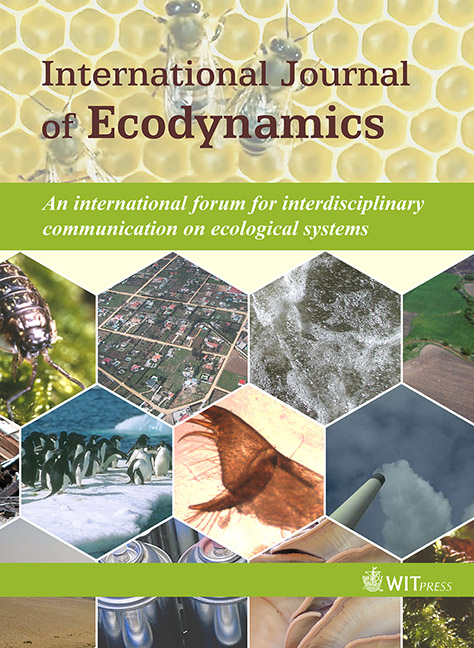An experimental model for mimicking biological systems: The Belousov–Zhabotinsky reaction in lipid membranes
Price
Free (open access)
Volume
Volume 1 (2006), Issue 1
Pages
8
Page Range
55 - 63
Paper DOI
10.2495/ECO-V1-N1-55-63
Copyright
WIT Press
Author(s)
N. Marchettini, S. Ristori, F. Rossi, M. Rustici
Abstract
Patterns and waves occur in many non-equilibrium processes. They are generated over a wide range of length scales and exhibit varying degrees of complexity. Ecosystem dynamics, self-organization at the cellular level and chemical oscillators are just three examples to illustrate the variety of systems where such phenomena occur. In this work we elucidate the mechanism through which patterns arise and propagate when the most famous example of a chemical oscillator (the Belousov–Zhabotinsky reaction) is carried out in a model biological environment, i.e. in the lamellar phase of several phospholipids that are relevant components of cell membranes. In particular, 1,2-dipalmitoyl-<i>sn</i>-glycero-3-phosphocholine (DPPC), 1,2-dimyristoyl-<i>sn</i>-glycero-3-phosphocholine (DMPC) and 1,2-dioleoyl-<i>sn</i>-glycero-3-phosphocholine (DOPC) were chosen to mimic plasma membranes with different properties of bilayer fluidity and different chemical behaviour. Turing-like patterns and other complex structures were especially evidenced in the DPPC/water system in the range 18–40% w/w lipid content. The patterns obtained are discussed in terms of transport phenomena and coupling between independent oscillators. Interesting analogies are found with microemulsions, where the aqueous phase is confined in nanodroplets dispersed in a hydrophobic matrix.
Keywords
Belousov–Zhabotinsky reaction, biomimetic systems, cell membranes, lipid bilayers, morphogenesis, self-organizing systems




